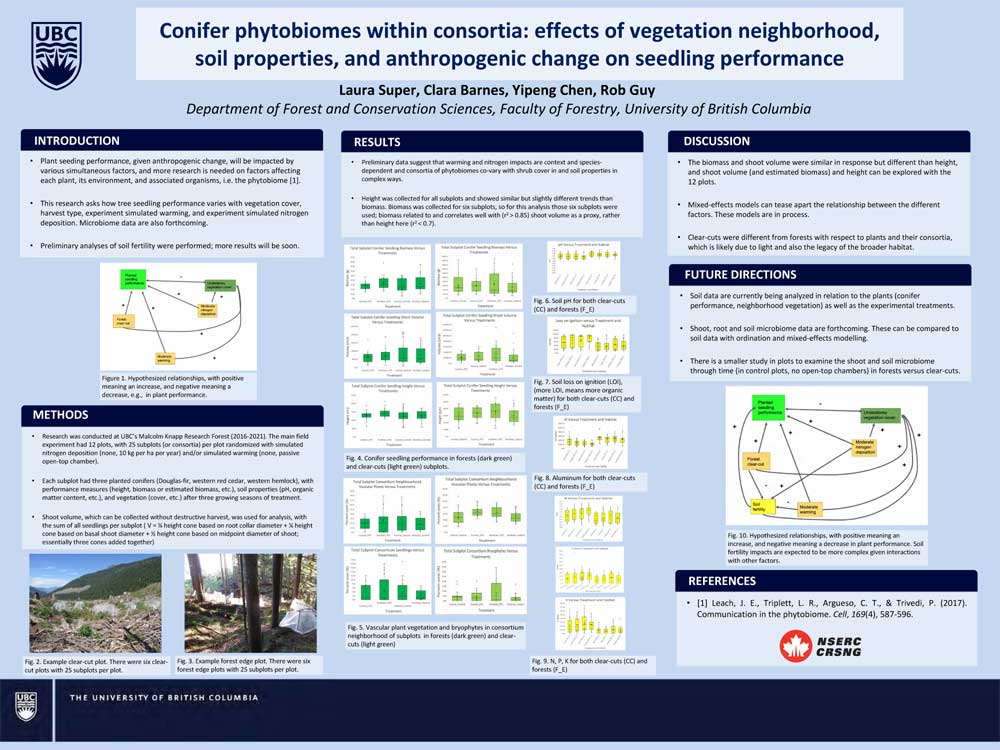
Humans are greatly impacting our ecosystems, including factors affecting each plant, its environment, and associated organisms, i.e. the phytobiome. Phytobiomes will not be in isolation, however, and it is important to understand how plants in different vegetation communities and soils will respond. In this study we ask: how are plants (tree seedling performance, neighborhood vegetation) and shoot, root, soil microbiome impacted by experimental treatments (warming, nitrogen, harvesting) and related to soil properties? Focusing here on plant response, we hypothesized that: i) planted tree seedlings (conifer phytobiomes) will have increased performance in clear-cuts compared to forest edges, ii) in clear-cuts planted tree seedlings with higher vegetation cover will be smaller because of competition, iii) more fertile soils will result in larger plants, iv) warming and nitrogen will increase plant performance, and v) there will be complex interaction effects. We performed a field experiment that had 12 plots (6 clear-cuts, 6 forest edges), with 25 subplots (or consortia) per plot randomized with simulated nitrogen deposition (none, 10 kg per ha per year) and/or simulated warming (none, passive open top chamber). Each subplot had three planted conifers (Douglas-fir, western red cedar, western hemlock), with performance measures (height, biomass or estimated biomass, etc.), soil properties (pH, organic matter content, etc.), and vegetation (cover, etc.). Preliminary data suggest that warming and nitrogen impacts are context and species dependent. Soil data are currently being analyzed in relation to the plants (conifer performance, neighborhood vegetation) as well as the experimental treatments. Microbiome data are forthcoming.

